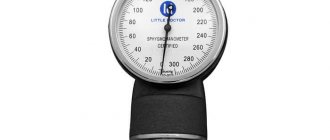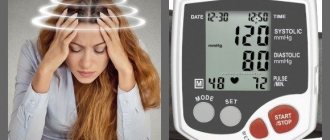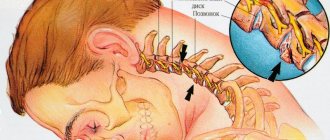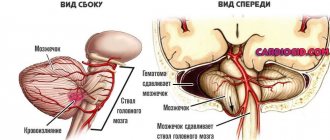Painful sensations often accompany us in life, but we do not always find and eliminate the cause of its occurrence and, accordingly, the disease. Perhaps one of the most common is headache, which has a medical name - cephalalgia. It differs in some ways. Quite often there is a headache on top of the skull. These and other characteristic features may indicate the presence of certain diseases or determine what consequences to expect. If you have a recurring headache, you should consult a doctor as soon as possible.
Characteristic
A pressing headache is a subjective sensation that occurs due to irritation of intracranial nociceptors or pain receptors located outside the cranium. The feeling of pressure on the head reflects damage (stretching, compression, displacement) of the structures:
- The hard membrane covering the brain.
- Cranial nerves.
- Arteries supplying the medulla.
- Soft tissues covering the skull (tendons, muscles, skin).
A feeling of fullness in the head, with or without pain, occurs without the participation of the brain matter and bone structures of the skull, which are not conductors of pain impulses.
Kinds
There are primary and secondary pressure headaches. In the first case we are talking about migraine, cluster cephalgia, tension pain. In the second, painful sensations are associated with injuries in the neck and head, vascular pathologies, impaired cerebral blood flow, and the use or refusal of pharmaceuticals.
Secondary forms, which are accompanied by a feeling of constriction in the head, include pain caused by infectious and mental diseases, damage to the organs of vision, hearing, nose, and elements of the oral cavity. Taking into account etiological factors, the following types of headaches are distinguished:
- Physiological. Associated with vegetative-vascular dystonia, a violation of neurohumoral regulation of the tone of the vascular wall. They are often combined with pain in the abdominal area and occur after excessive sleep.
- Symptomatic. Correlate with the primary disease, which manifests itself with similar symptoms. These include somatic diseases, vascular pathologies, infectious lesions, and neurological disorders.
- Psychogenic. They occur as a result of physical and nervous overstrain, stress, or in a state of passion (severe excitement).
The share of symptomatic forms is about 20% in the general structure of cephalgia. The success of treatment of symptomatic forms depends on the early detection of the primary disease and the causes of the development of painful sensations.
What drugs can quickly relieve pain?
Tension headaches are painful, but most people benefit from medications that have antispasmodic effects, which relax the smooth muscles. For tension headaches, doctors often recommend NSAIDs.
| Name | What do they help with? | Side effects |
| Aspirin | Migraine attacks | Nausea, tinnitus, skin rash |
| Ibuprofen | Cervical migraines, neuralgia, myalgia, tension pain | There are no side effects in small doses |
| Tylenol | Pain syndromes of moderate and low intensity, migraine | Adverse effects are rare and include nausea and allergies. |
| Next | Primary headaches | Rarely: vomiting, heartburn, diarrhea |
| Citramon | Relieves stress headaches | Sometimes irritates the gastric mucosa, should not be taken by people with ulcers |
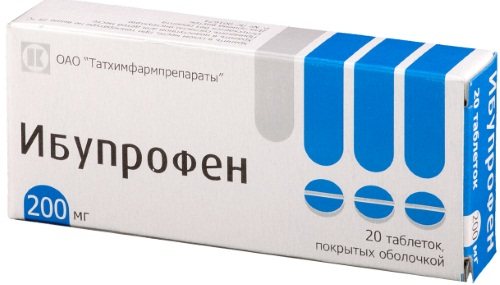
When choosing a drug, you must be guided by the established cause of pain, for which you should consult a doctor.
Causes
If the head is compressed like a hoop and dizzy, this may be due to an intracranial infectious process, which is usually accompanied by characteristic symptoms (fever, meningeal symptoms, paresis and paralysis, convulsive attacks, speech dysfunction).
In these cases, conditions where there is severe compression of the head and dizziness occur require emergency medical attention. Angiospasms in the area of small branches of the main intracranial arteries (carotid, vertebral) lead to stagnation and an increase in the volume of venous blood within the cerebral bed, which provokes the appearance of painful sensations.
Inflammatory processes localized in the head area, including respiratory viral infections, influenza, diseases of the ear (otitis and labyrinthitis), throat (pharyngitis and laryngitis), nose (rhinitis and inflammation of the paranasal sinuses), eyes (conjunctivitis and endophthalmitis) often cause pain and feeling of fullness in the head area. Common causes of the sensation of pressure on the inside of the head:
- Hypertonic disease.
- Traumatic brain injuries.
- Migraine, tension pain.
- Hormonal imbalance.
- Stressful influences.
- Osteochondrosis.
- Disturbance in sleep and wakefulness.
- Volumetric intracranial formations (tumors, cysts).
Neurasthenia is a disease that reflects weakness and decreased functionality of the elements of the nervous system. Often neurasthenia is combined with a disorder of cerebral blood flow and chronic ischemic processes in the brain tissue. The disease is manifested by a feeling of squeezing, tightening, and pulsation in the head.
The feeling of pressure on the head is often associated with pathologies of the spine. Vertebrogenic (associated with the spine) pain and a feeling of compression in the head area develop according to the principle of compression-irritation or reflex-angiospastic course.
In the first case, the mechanism of development of cephalgia is associated with irritation and compression of the nerve roots in the spinal column, in the second - with a reflex spasm of the vascular wall of the vertebral arteries. The reasons for the feeling of pressure on the back of the head can be associated with intoxication, poisoning with nitrates, carbon monoxide, arsenic and other neurotoxic substances. The feeling of squeezing the head occurs as a result of many of the primary diseases discussed below.
Arterial hypertension
If the head is bursting from the inside with or without pain, this may indicate a sustained increase in blood pressure, which correlates with diseases of the heart (heart failure, atrial fibrillation) and blood vessels (atherosclerosis, developmental abnormalities). Acute encephalopathy of hypertensive origin leads to disruption of neurohumoral regulation of cerebral blood flow and cerebral edema, which causes a feeling of constriction in the head, but not pain.
It is believed that the feeling of squeezing and squeezing the head, as if in a vice, is caused by a reflex contraction of the muscles lying next to the skull, difficulty in venous outflow, and increased pulsation of the main cerebral arteries. Provoking factors: alcohol consumption, excessive physical activity, strong emotional experiences.
Cerebral blood flow disturbance
The head hurts, as if it were pressing and bursting from the inside, often due to an acute disturbance of cerebral blood flow, which is more common among elderly patients. Any form of ischemic or hemorrhagic stroke causes a headache.
Less commonly, such sensations occur in the prodromal (preceding) period or for 2-4 weeks after stroke. If the feeling of tightness and cephalalgia last longer, there is a high probability of the influence of psychogenic factors, for example, depression. Associated symptoms: speech impairment, motor dysfunction, nausea, vomiting.
Arterial hypotension
If the pressure is 100 to 70 mm. Hg Art. or lower, patients are often haunted by the feeling that the head does not hurt, but there is pressure inside, which is due to a persistent decrease in the tone of the walls of arterioles and cerebral arteries. In this state, pulse stretching of the arterial walls and sustained expansion of the vascular bed occurs. The nature of the pain is dull, generalized.
In this case, the skull seems to shrink and tighten under the influence of provoking factors - physical and mental fatigue, stress, oxygen starvation of brain tissue. Associated symptoms: lethargy, a feeling of heaviness in the area of the skull, as if it were pressing and pulled from the inside.
Giant cell arteritis
Systemic inflammation of the blood vessels begins with damage to the temporal arteries. Usually combined with myalgia of the rheumatic type. It is more often detected among women over 50 years of age. Pain, sometimes throbbing, localized in the forehead and temples with irradiation to other parts of the head is the first symptom of the disease.
Painful sensations often intensify while eating. Associated symptoms: loss of appetite, soreness in the jaw muscles, reflex tension of the spinal muscles, aching pain in the joints and skeletal muscles.
Cerebrovascular diseases
The feeling of constriction and pressure in the head in cerebrovascular pathologies is caused by a constant lack of blood supply to the brain tissue. Associated symptoms: sleep disorder, muscle and general weakness, increased fatigue.
Traumatic brain injuries
After suffering traumatic injuries to the skull and intracranial structures, there may be pressure in the head when the patient bends over or makes sudden movements. Painful sensations are caused by hemodynamic disturbances and damage to soft tissues located in the cranium and neck.
Associated symptoms
A common cause of the condition when there is pressure on the head from above is physical stress, effort, coughing. In this case, the compressive pain in the head is often bilateral, of moderate intensity, and can be combined with symptoms - photophobia, increased sensitivity to noise, nausea. Tension pain is often monotonous and dull, localized in the forehead, occipital or temporal part of the skull. Symptoms that may accompany a feeling of fullness in the head:
- Nausea, vomiting.
- Increased sensitivity to light and sound stimuli.
- Soreness in the muscle area.
- Lacrimation, conjunctival hyperemia (redness of the membrane of the eye), swelling in the eyelid area.
- Hyperemia of the skin of the face.
- Rhinorrhea (copious discharge from the nasal cavity).
- Anxiety, restlessness.
With neurasthenia, the head hurts, as if it were squeezing the skull, and other symptoms of the disease appear - emotional lability (mood swings), obsessions, sleep disorders, inability to concentrate. Other signs of neurasthenia: paresthesia (sensitivity disorder - numbness, feeling of heat or chills, crawling in the limbs and body).
Movement disorders include muscle weakness and increased fatigue. With migraine, a feeling of constriction in the head is combined with symptoms such as nausea; after attacks, signs are observed - drowsiness, lethargy. The pain is often one-sided, throbbing, and is characterized by repeated attacks.
In the cluster form, painful sensations shoot, drill, and are localized in the orbital and temporal zones. The attack is often accompanied by psychomotor agitation, nasal congestion, lacrimation, and heart rhythm disturbances (bradycardia - decreased heart rate).
In the vertebrogenic compression-irritative form of cephalalgia, the head is compressed and pressed when the neck is turned or when the patient bends over. The condition is characterized by a decrease in the volume of cerebral blood flow, which is manifested by nausea, photopsia (the appearance of moving, often luminous dots, lightning, spots in the field of view), blurred vision. The patient becomes dizzy, hearing acuity deteriorates, noise, hum, and whistling appear in the ears.
With forced head tilts, loss of balance and unsteady gait are observed. With the vertebrogenic reflex-angiospastic form of cephalgia, the skull bursts from the inside, causing painful sensations in the neck, shoulders, and upper vertebrae. Typically, symptoms worsen with rapid turns of the neck or as a result of prolonged stay in a static position (sitting at a table, playing the piano).
Prevention
Preventive measures to prevent the appearance of pain in the crown area are not difficult.
These include:
- active lifestyle without bad habits, physical education;
- balanced diet, consumption of foods rich in vitamin B2 (nuts, eggs, spinach, broccoli, etc.);
- moderate coffee consumption;
- healthy, sufficient sleep using an orthopedic pillow;
- calm psycho-emotional state without stressful situations;
- active 10-minute breaks when working at the computer (performed every hour) with warm-up exercises.
Pain in the crown of the head may indicate a serious pathology. A doctor can determine the cause of their appearance based on research. The earlier the correct diagnosis is made, the easier it is to cope with the disease. Self-medication is dangerous.
Diagnostics
Due to the many possible causes of head compression, correct diagnosis is important. In 35% of cases, it is not possible to establish the exact causes of pain. If the patient complains of bursting pain in the head area, the doctor collects an anamnesis and prescribes instrumental and laboratory examinations to identify etiological factors.
During the consultation, the nature, intensity, exact localization of pain, and factors provoking the development of an attack of cephalgia are clarified. A blood test shows the presence of an inflammatory process, metabolic and endocrine disorders (hemoglobin deficiency, changes in the concentration of hormones, glucose, lipids), which makes it possible to suspect the disease that provoked the symptom - cephalgia. During an ophthalmological examination, the following characteristics are revealed:
- Condition of the fundus and blood vessels.
- Visual acuity.
- The presence of a spasm of accommodation.
- Signs of visual dysfunction (loss of visual fields, appearance of foreign objects within the boundaries of vision - dots, spots).
A neuroimaging examination (CT, MRI) shows the presence of space-occupying formations in the medulla. Angiography and Doppler ultrasound are performed to identify the condition of the elements of the circulatory system of the brain, including to detect abnormalities in the development of blood vessels - arteriovenous malformations, aneurysms.
Using electroencephalography, features of the bioelectrical activity of the brain and the presence of convulsive foci are revealed. If the compressive pain in the head is severe, acute, a lumbar puncture is prescribed to rule out infectious brain damage (meningitis, encephalitis) and subarachnoid (in the space between the meninges - soft and arachnoid) hemorrhage.
Pressing pain in the head: the head hurts as if it were squeezing the skull – Injuries
According to statistics, every person experiences a pressing pain in the head at least once in their life. It can have different localization and degree of intensity, and is often accompanied by additional symptoms. The reasons why the head is compressed can also be different.
The sign is not always pathological in nature, but must be assessed by a specialist. In most cases, it can be eliminated by adjusting your daily routine or switching to a healthier lifestyle. Conservative therapy provides good results for a number of diseases.
Ignoring a symptom can lead to the development of emergency conditions.
Treatment
Treatment of conditions where there is constant pressure on the head and dizziness is prescribed based on the results of a diagnostic examination, taking into account the type of primary disease and other reasons that provoked cephalalgia. In case of arterial hypotension, it is necessary to establish a daily routine, observing the frequency of work and rest. Procedures indicated: morning exercises, good nutrition, hardening. The main groups of drugs for the treatment of circulatory disorders and pain relief:
- Non-steroidal anti-inflammatory drugs.
- Non-narcotic analgesics, ergotamine-based drugs.
- Anticonvulsants, muscle relaxants.
- Correctors of cerebral blood flow, vasodilators.
- Nootropic, neuroprotective.
Surgical treatment is indicated in the presence of space-occupying formations (tumor, hemorrhage, abscess) in the brain tissue. Treatment for infectious diseases involves the prescription of antibacterial and antiviral agents. Therapy for arterial hypertension includes taking medications - beta-blockers, calcium channel blockers and angiotensin receptor blockers. Corticosteroids are used in complex therapy of giant cell arteritis.
If there is a constant feeling of pressure in the head, it is better not to draw conclusions on your own and not to self-medicate, which can negatively affect your health. Careful diagnosis and correct therapy will help eliminate unpleasant symptoms.
